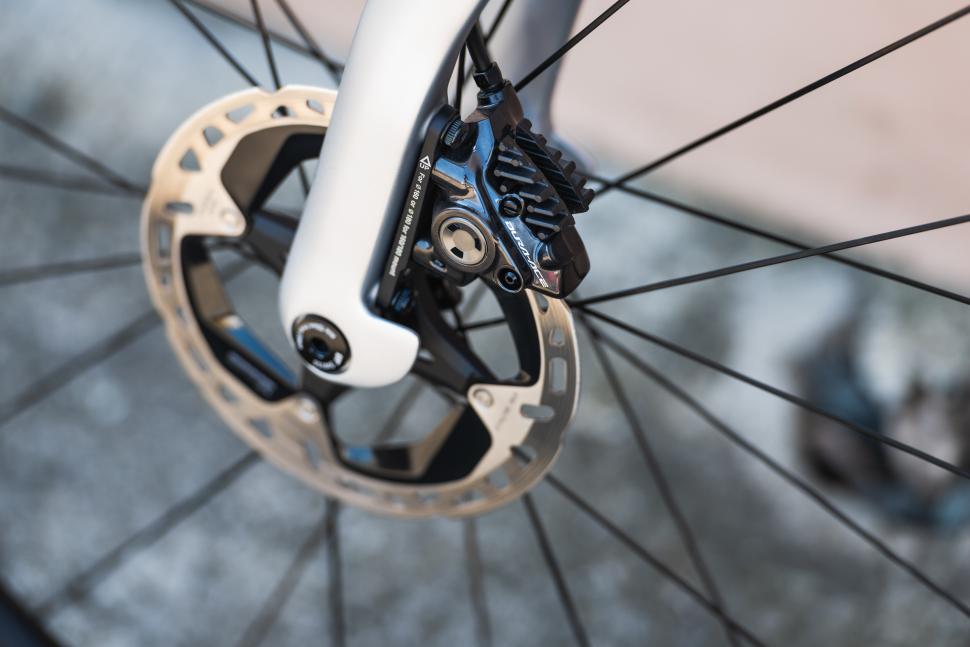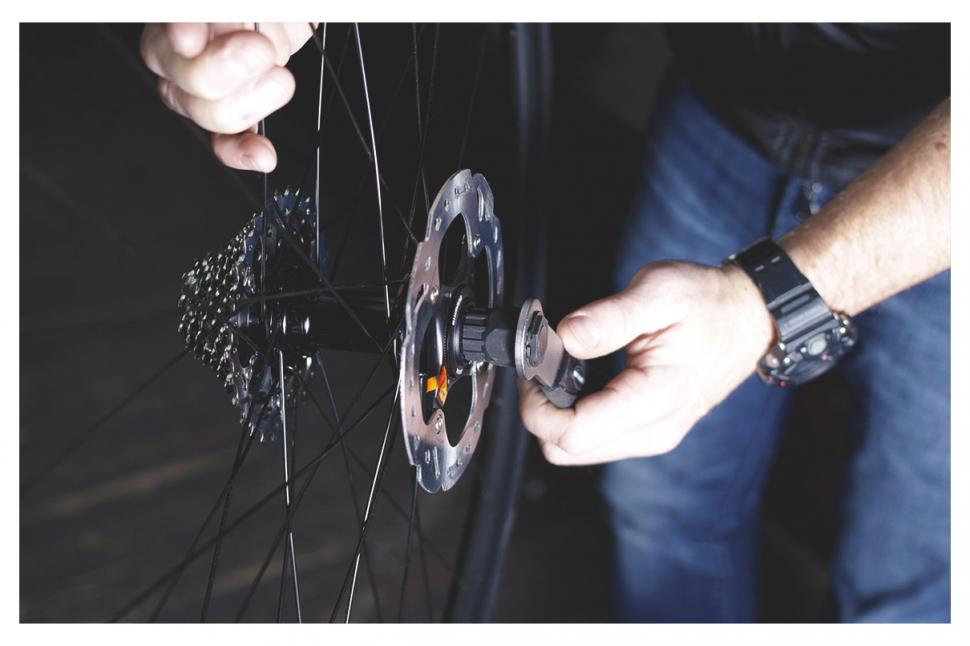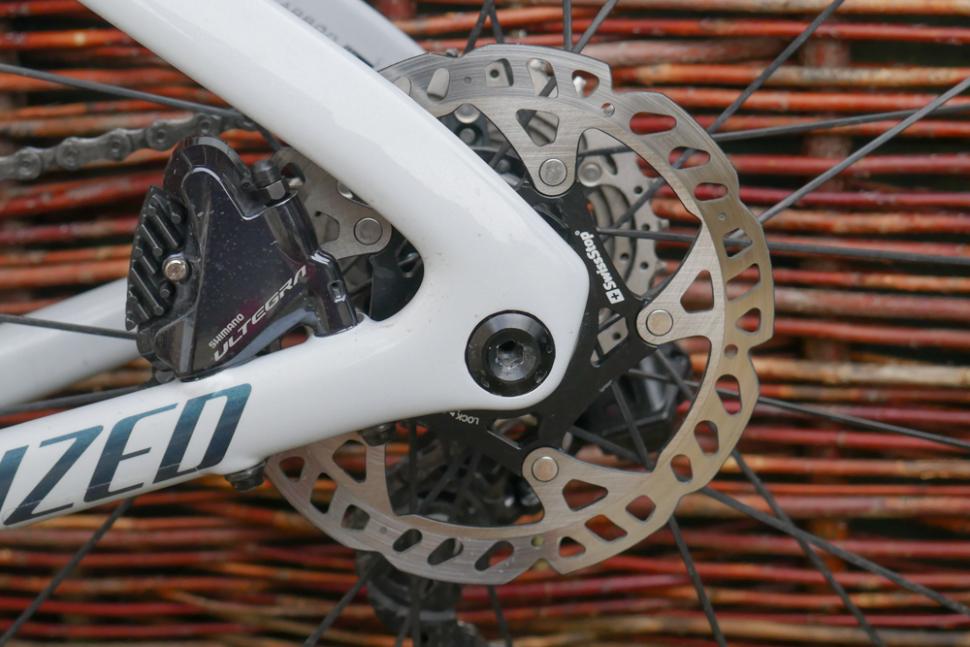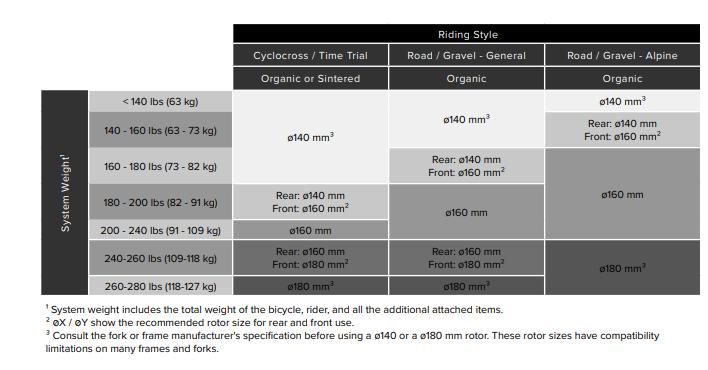- News
- Reviews
- Bikes
- Components
- Bar tape & grips
- Bottom brackets
- Brake & gear cables
- Brake & STI levers
- Brake pads & spares
- Brakes
- Cassettes & freewheels
- Chains
- Chainsets & chainrings
- Derailleurs - front
- Derailleurs - rear
- Forks
- Gear levers & shifters
- Groupsets
- Handlebars & extensions
- Headsets
- Hubs
- Inner tubes
- Pedals
- Quick releases & skewers
- Saddles
- Seatposts
- Stems
- Wheels
- Tyres
- Tubeless valves
- Accessories
- Accessories - misc
- Computer mounts
- Bags
- Bar ends
- Bike bags & cases
- Bottle cages
- Bottles
- Cameras
- Car racks
- Child seats
- Computers
- Glasses
- GPS units
- Helmets
- Lights - front
- Lights - rear
- Lights - sets
- Locks
- Mirrors
- Mudguards
- Racks
- Pumps & CO2 inflators
- Puncture kits
- Reflectives
- Smart watches
- Stands and racks
- Trailers
- Clothing
- Health, fitness and nutrition
- Tools and workshop
- Miscellaneous
- Buyers Guides
- Features
- Forum
- Recommends
- Podcast
feature
 Shimano Dura-Ace R9200 - Pinarello Dogma F - Detail (CREDIT Irmo Keizer_Andreas Dobslaf)-01
Shimano Dura-Ace R9200 - Pinarello Dogma F - Detail (CREDIT Irmo Keizer_Andreas Dobslaf)-01Can you fit bigger rotors to a disc-brake road bike?
Disc brakes have become pretty much ubiquitous on modern road bikes, and many riders will be asking a few questions when they finally wear through the rotor: what size do I have, what should I actually be using, is there a benefit to going bigger? We’ve spoken to Shimano, SwissStop, Hope and SRAM to get you the answers.
What have you got already?
If you’ve bought a road bike in the past few years with disc brakes on it, then you’ve probably got either 140mm or 160mm rotors. You might also have a combination with the smaller size on the rear.
Take a look at your rotors, the size should be printed somewhere in the centre of the rotor.
Can you get more power?
Simple physics dictate that yes, larger rotors provide more stopping power. The very basic premise is that, as you increase the size of the rotor, you increase the leverage acting on the wheel, thus it is easier to stop.
> Review: SwissStop Catalyst Rotors
Simple, right? Well, it isn’t always quite that easy. SwissStop’s Christian Heule says that “there are several limiting factors that can actually affect how quickly a bike stops.”
The main barrier to braking power is grip. At some point, the strength of the brake will overcome the friction between the tyre and the road and you'll lock up, causing a skid. Shimano’s Ben Hillsdon points out: “If you use a rotor that is bigger than your riding style or than the terrain calls for, you will have more aggressive braking power and modulation becomes more difficult.”
This means that if you pulled on the brake levers with the same force from your hands, the larger rotor would lock up the wheels earlier than with a smaller rotor. In practice, you can mitigate against this just by being more gentle with your hands. SRAM’s Danie Lategan suggests that this reduction in hand effort is actually a benefit of larger rotors.
While you might not end up feeling the difference in hand effort, it is worth casting your mind back to when cantilever brakes were commonplace in the world of cyclocross. They lacked power even in the best conditions and the end of a wet race would leave your hands almost as tired as your legs. They were good for teaching you correct line choice, however.
Is bigger better?
But is bigger actually better when it comes to rotor size? There is no one answer for every rider, but each of the brands that we spoke to was in agreement that if you’re a road rider running a 140mm rotor on the front of your bike, you’ll probably see benefits when going up to a 160mm rotor.
> Review: Hope Road CL Disc Rotor
When disc brakes first made their way onto road bikes, 140mm was seen as the size that offered a feel that was most similar to rim brakes, and the smaller size kept the weight down as much as possible. As with many things in cycling, this has stuck around, but there are plenty of bike brands and rotor manufacturers that are choosing to make their standard offering a 160mm, at least on the front wheel.
Some bike brands, such as Open, have also made forks native to 160mm rotors, meaning that you don’t need an adaptor that many road frames require you to use.
Components manufacturer, Hope, meanwhile, says that it has always gone for 160mm rotors over 140mm. Hope’s Robin Godden explains“no matter on road or off road you still have the same moving mass to stop.”
In addition to this, he says that “on the road you could be descending at higher speeds for longer so you would want consistent braking all the time.”
SwissStop’s Christian Heule also pointed to longer and faster road descents, saying that 160mm rotors have better heat management "due to the increased amount of material on the rotor surface and increased time until the brake pad touches the rotor again in the same place."
> When should you get new disc brake rotors?
He continues: "With more efficient heat management, the rotor and pad can remain under their maximum operating temperatures and the whole braking system can perform as designed.”
In essence, under the same braking conditions, SwissStop are saying that a 160mm rotor will continue to work properly for a longer period of time than a 140mm rotor.
Do bigger rotors weigh more?
Yes, but there isn’t much in it at all. SRAM and Shimano both claim a weight gain of just 20g per rotor when switching from a 140 to a 160mm size, and if your frame is designed to take 160mm rotors natively, you can throw away the adaptor that many setups use.
> Read our thoughts on the SRAM Red eTap AXS brakes
Hope’s Robin Godden says that “the better braking is worth that extra 20 grams or so” anyway.
How easy is it to switch rotors?
Increasing your rotor size from 140mm to 160mm is relatively easy, just check that your frame will fit larger rotors before you spend any money. You will have to remove the rotor that is already attached to your wheel, but for centre-lock rotors that can be done with a cassette lockring tool for rotors such as Shimano and SRAM’s road models, or a 16-notch 44mm lockring tool for systems like Campagnolo.
6-bolt rotors are even simpler to remove with a Torx 25 key all that is required. Once you’ve popped the new rotor on, you will need to adjust the position of the calipers, but that is a simple job.
Are there any downsides to going bigger?
SwissStop’s Christian Heule suggests that one of those downsides is that they “tend to be less straight and bend easier after use which can result in the rotors rubbing against the pads causing drag.”
To guard against this, Christian says that SwissStop actually makes its rotors thicker as they increase in size. This, he says, “has a secondary effect of aiding the cooling of the rotor.”
> Everything you need to know about disc brakes - read our definitive guide
You will also need to check that your frame and fork can accommodate larger rotors. This is best done by contacting the manufacturer.
As discussed previously, with the larger rotor providing greater leverage over the wheel, you will need to learn how to control that power. This finer control of your hands might take a little bit of getting used to, but you should be familiar with your new found power within the space of a few rides.
How to choose rotor size
SwissStop’s advice is as follows: “On drop bar bikes, the general recommendation is to use 160 front at all times to optimise braking performance. Almost all UCI Teams use the combination of 160mm and 140mm even though they are usually lighter than we are and far more experienced so we’d at least recommend this setup to start for road bikes and maybe look at increasing the rear rotor for gravel applications.”
> Did Shimano make disc brakes perfect with the new R9200 Dura-Ace groupset?
Shimano says: “In general bike manufacturers are responsible to make sure their bikes are according to EN/ISO norms, which also includes brake performance. Therefore, bikes are equipped with rotor sizes which should be suitable for the type of bike and the usage. If a rider has different riding needs or characteristics, factors such as weight reduction or more stopping power can determine if they need a bigger or smaller rotor.
SRAM, meanwhile, have made a handy graph. This suggests that for most road riding, 140mm rotors are sufficient for riders up to 73kg. If you are heavier than this, or you ride lots of long, steep descents as found in hilly or mountainous terrain, the graph suggests moving to a 160mm front/140mm rear setup.
Interestingly, cyclocross riders up to 82kg are recommended to use just 140mm rotors. This is an example of where a larger rotor might too easily lock up the wheels due to the lack of traction from the combination of muddy surfaces and comparatively narrow 33mm tyres.
So do the downsides of going bigger outweigh the positives? From what we can see that's a no, and aesthetics are generally the reason that riders cite for sticking with 140mm rotors front and rear. If you can look past the visuals, there are very few downsides.
Latest Comments
- redhanded 1 hour 5 min ago
I had 2 bikes stolen from bike shed outside my flat in London last year. They ended up for sale in Russia. A cycling club I'm a member of tweeted...
- Deac 2 hours 6 min ago
I tried the footrest on the way home, it's a great idea, you can keep on the saddle making it easier to get away from the traffic lights, and being...
- mdavidford 4 hours 36 min ago
"Driver fined £100 after stopping to be sick" https://www.bbc.co.uk/news/articles/ce8g13pp0plo
- ktache 4 hours 59 min ago
Not that they would be as technical, or maybe quite as grippy, but does the skate industry provide any solutions?
- wtjs 5 hours 15 min ago
the Metropolitan Police contacted Vikash to inform him that they have created a report for the incident and that the video has been “passed to the...
- Rendel Harris 5 hours 42 min ago
Sorry to be a killjoy but it doesn't amuse me at all, I hope the idiot gets caught and punished. Putting yourself on the same road as pros...
- willpom @GWRaudax 6 hours 17 min ago
Steve Poulton has just published The Cheltenham Flyer - 10th May https://www.audax.uk/event-details/calendar/13235-cheltenham_new_flyer_200
- David9694 6 hours 34 min ago
Chef left with 'car sticking out of house' on crash-hit road...
- HKR 9 hours 28 min ago
It's not 4k though. It's a 4k sensor. But when image stabilization is on, that's chopped down to little over a 1080 image. ...








Add new comment
28 comments
If bigger is always better, the logical conclusion is that rim brakes are best
You'd think, but since they aren't, the logic must be lacking!
Maybe we should try hydraulic rim brakes and swap rubber brake pads with some sintered pads. Might affect the life of the rim though.
People may not be aware that hydraulic rim brakes were a thing. Magura more or less cornered the market such as it was.
They were not any easier to set up, and the stopping power wasn't spectacularly different.
It dawned on me that there is a fundamental difference between rim and disc, and that is that the pressure applied per square inch must be a lot higher, so in the wet, a disc brake is more likely to be unaffected by water which it can more readily squish out the way, whereas rim brakes clearly get affected by surface muck and water. There are limits to how hard you can squish a hollow rim too.
My 26inch ceramic rims with xtr Vs are comparable to my hopes, only in the dry, in the wet, not so much.
Nokon cables and To brake booster on the front too...
Now Maguras on ceramic or carbide rims...
I ride a Giant Defy with 160mm rotors F/R. I weigh 99kg and am 191cm (6'3). I find the 160mm rotors don't have much bite. I basically have to squeeze both levers really hard just to slow down. I would love to go up to 180mm.
I'm a mere 80kg riding Ultegraon my 2017 Defy with 140s and stock Shimano resin pads. I never have to squeeze what I consider really hard though I find the travel quite high.
I've got 584 and even 622mm discs on my bikes.
Same here, and carbon too! You'd think they'd be amazing,...sadly not.
I have recently upper my 180 front to a 203, and gone for swissstop pads, more to equalise the front with the rear. The rear would lock up a bit too easily at 160, now the front has that little more bite. My Hopes don't do a power adjust, just reach and bite point.
I needed to change the pads and the disk was getting close anyway.
It works and I should have done it originally, the swissstops make a little less noise than the Hope organics.
My CX came with160 up front and 140 at back. Quickly changed the rear to 160 and a marked improvement in braking was observed. On and off road.
I also weigh less than 82kg and have had zero issues with lack of traction using skinny tyres. Why? The major benefit of disc brakes is the better control you get.
I'm a bit baffled, changing the rotor requires step by step instructions for what is basically unscrew it and screw a new one in its place, whereas dealing with the caliper gets a throwaway "adjust its position", whereas in my experience it might need buying an adapter, or changing the position of an adapter. The caliper is the hard bit, and then you have to make sure it is properly aligned.
The other article is "do I need to pay an extra tenner for a pair of pads with fins on for a bike if I never do any long or fast descents?" On that one, for peace of mind I fit fins on the front and finless on the rear.
And while we are at it, sintered or resin for roadies? My answer, anything you can get your hands on at the moment!
I bought a Vitus gravel bike which had 160s front and rear, TRP Spyre cable calipers and have never looked back to the bad old rim brake days when you couldn't rely on stopping in the wet because of the muck and water on the rim. Disks are great!
Not true - had much the same recently with organic pads in the wet. Hayes cable calipers. They will be replaced with scintered ones as soon as I get round to it - in fact, I've got a full hydraulic upgrade to fit when I have the time.
Given that both my bikes already have 160/160, this article didn't really answer the question. I'd be interested in a 180 front, but would worry that the fork and wheel couldn't take the extra load.
As the article suggests, the limiting factor is grip not braking torque through the wheel, and the extra braking power is probably about 10%, though someone more versed in force and leverage would give you a more accurate answer - the braking area contacted by the pads doesn't change.
I have two Giants, a Defy and a Revolt, the former with 140s and 25mm tyres and the later with 160s and 32mm tyres. Thinking about contact areas, I'd suggest that it makes sense to me that the braking capacity is matched to the tyre capacity.
I'd be surprised if the rotational forces through the wheel would be a problem based on disc size - more concerning would be if you were carrying a lot of weight - bikes quite often have a design weight quoted and if a rider is north of 110kg then many road bikes and wheels are going to be at their design limits, (a quick Google says 109kg for Fulcrum Racing 5's for example, which is pretty much a bread and butter wheel set). 110kg is 15 stone - not excessively over-weight for a 6 footer.
Hate to be the bearer of bad news 110kg is 17.3 stone!
15 stone is more like 95.3 Kg
Did you just sign up to correct a year old post? Welcome to road.cc.
My experience has been that riders increase the disc size, generally from 140 to 160mm, where they suffer heat dissaption related disc warp. The cause could be their weight, long descents or just that their riding style is one where they drag the brakes.
Shimano also seems to have an issue with their Dura Ace discs in that they don't remove heat as efficiently as their other disc models. Pro's are widely reported to replace them with the MTB Shimano XTR discs and even at a club level , I've heard unhappy riders complain of heat related DA disc 'ping' or pad rubbing.
Eh? Surely the time between contacts is one wheel rotation? The time that takes would be longer if it's slowing you down more quickly, but that's kind of begging the question.
[Edit] I suppose it's actually one wheel rotation minus the fraction of it spent passing between the pads, which (pad size being equal) would be slightly smaller for a larger rotor. Is 20mm really enough to make a significant difference to that proportion though?
Its pretty clumsy way of saying the rotational velocity of a 160mm disc is higher because it has a bigger diameter. All points of a disc perform 1 rotation in the same time but to do that the outer points must be travelling faster than the inner points.
Not convinced it dominates over either the radius of the disc or the surface area of the disc from a braking perspective though.
The circumference of a 140mm disc is ~880mm, for a 160mm disc it's ~1005mm, which is about a 15% increase. For one wheel revolution each point on the disc will (hopefully!) go under the brake pads once, so for a 160mm disc each bit will be in contact with the pads for ~15% less time, so it's not insignificant. Assuming a disc with no cooling fins and a 10mm wide braking track on the disc, the area of the braking tracks increase by about the same amount, but I suspect the effect of surface area on cooling of a spinning, unevenly heated disc is non-trivial.
But the basic premise that bigger disc = better cooling should hold and even the shift from 140->160mm looks like it would have a pretty big effect.
You're confusing distance with time, though. Let's say that the brake pad is 100mm (I don't really know what a typical size is).
The non-contact distance travelled by the smaller rotor is 880 - 100 = 780mm.
The distance for the larger rotor is 1005 - 100 = 905mm.
So the increase is (905 - 780)/780 = 16.0%
But...
The non-contact time for the smaller rotor is 1 rotation x 780/880 = 0.886 of a rotation
The time for the larger rotor is 1 rotation x 905/1005 = 0.900 of a rotation.
And the increase is (0.900-0.886)/0.886 = 1.2%
If you're reading this, you may need to check that your Shimano pad pins haven't seized.
I put a very tiny amount of copper anti-seize compound just on the threaded part of my pad retaining screws. I use a small screwdriver to scoop a miniscule amount out of the tube each time I clean the brakes. That seems to avoid them getting stuck.
But then I live somewhere with big descents so I have to clean my brakes after about three outings or the dust from the pads gets too much for them anyway, so they get moved quite often.
And swap them out for Tektro 3mm cap head type....
...and here's a handy link for XT-M785 pins:
https://www.sjscycles.co.uk/brakes/shimano-deore-xt-brm785-pad-axle-snap-ring-y8jz98010/
While I think of it, here's a shout out to Noah and Theo if you have trouble finding genuine brake pads in stock:
https://noahandtheo.co.uk/
My mechanic put me onto split pins, and haven't looked back.
I found a good stock of Shimano brake pads at Decathlon (guess it's not the first port of call for bike parts).